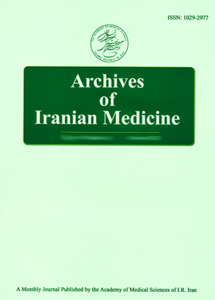Authors
Affiliations
Abstract
Introduction: The significant increase in the rate of morbidity and mortality due to cardiovascular diseases has become a health challenge globally. Lack of enough knowledge on the underlying causes in Iran and taking the unique characteristics of the Shiraz metropolitan city (the capital city of Fars Province) into consideration prompted us to conduct the Shiraz Heart Study. The aim of this study is to determine the predisposing elements leading to coronary heart disease, cerebrovascular disease and peripheral arterial disease.
Methods and analysis: In this population-based, prospective study, family physician clinics will become the executive arms. Participants aged 40-70 years old will be recruited to achieve a sample size of 10 000. Socioeconomicta and anthropometric indices supplemented by physical activity, nutritional and psychological questionnaires, as well as routine blood laboratory tests, medical history and electrocardiographic records, will be collected at enrolment in clinics. In addition, blood samples will be obtained to explore the possible role of genetics in outcome occurrence. Follow-up with blood sampling, completion of a lifestyle questionnaire and evaluation of clinical risk factors will be carried out five times in a 2-year interval for all participants. Advanced statistical methods such as mixed model and time-to-event models will be used for data analysis.
Ethics and dissemination: This study is in accordance with the Helsinki Declaration and has been approved by the Research Ethics Committee of Shiraz University of Medical Sciences (No: 2017-358). Signing a written informed consent is the preliminary step. Participants are free to withdraw on their request at any time. Collected data are kept encrypted in a software with authorities’ access only. Findings of the study will be published at a national or international scale through peer-reviewed journals.
Keywords: cardiovascular disease; cohort study; urbanization.
How to Cite
Zibaeenezhad MJ, Ghaem H, Parsa N, Sayadi M, Askarian M, Kasaei M, Sohrabi Z, Dehghani-Firouzabadi A, Nariman A, Radmanesh S, Mani A, Bahramali E, Nikoo MH, Moaref AR, Razeghian-Jahromi I. Analysing cardiovascular risk factors and related outcomes in a middle-aged to older adults population in Iran: a cohort protocol of the Shiraz Heart Study (SHS). BMJ Open. 2019 Apr 3;9(4):e026317. doi: 10.1136/bmjopen-2018-026317. PMID: 30948600; PMCID: PMC6500324.

